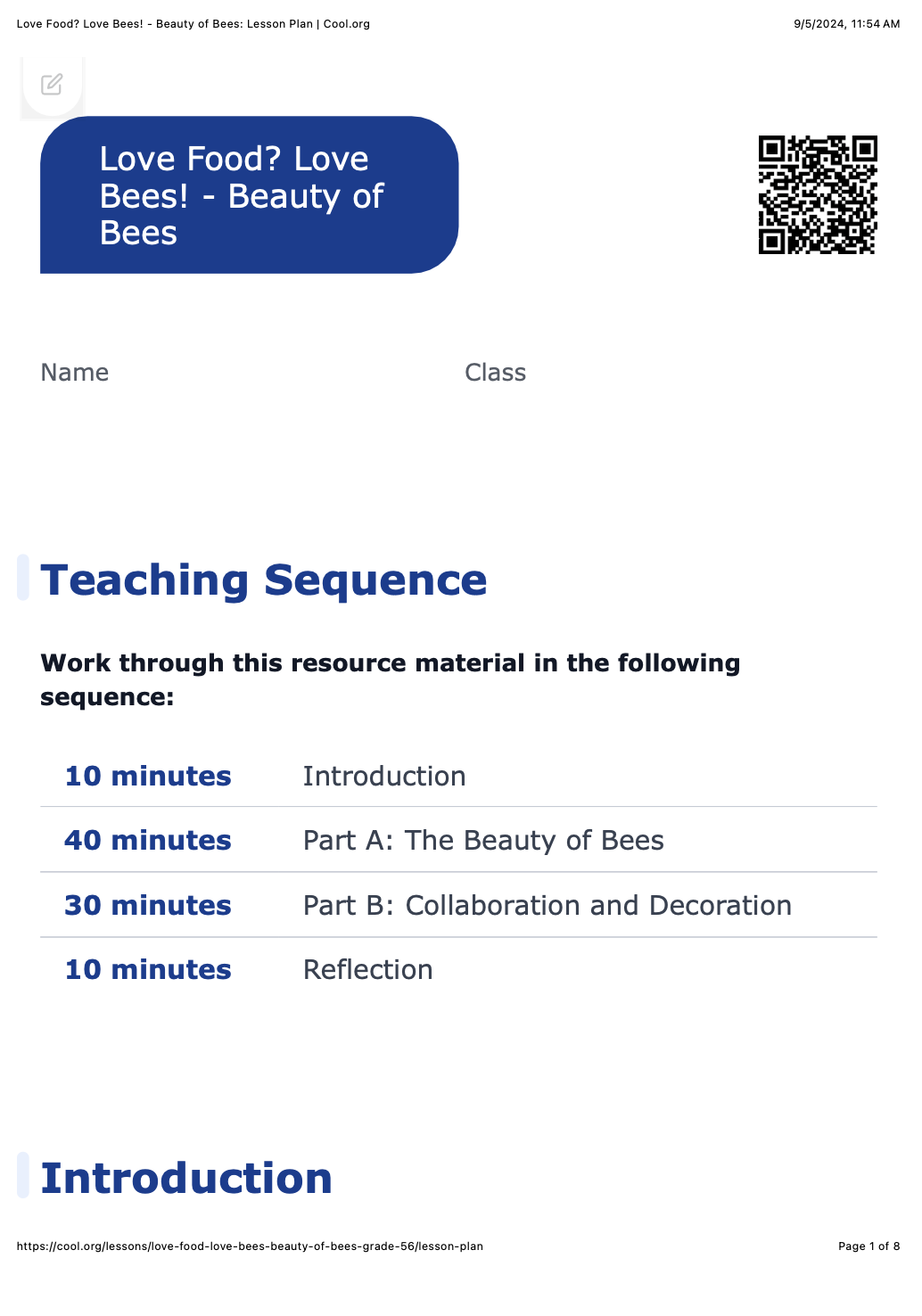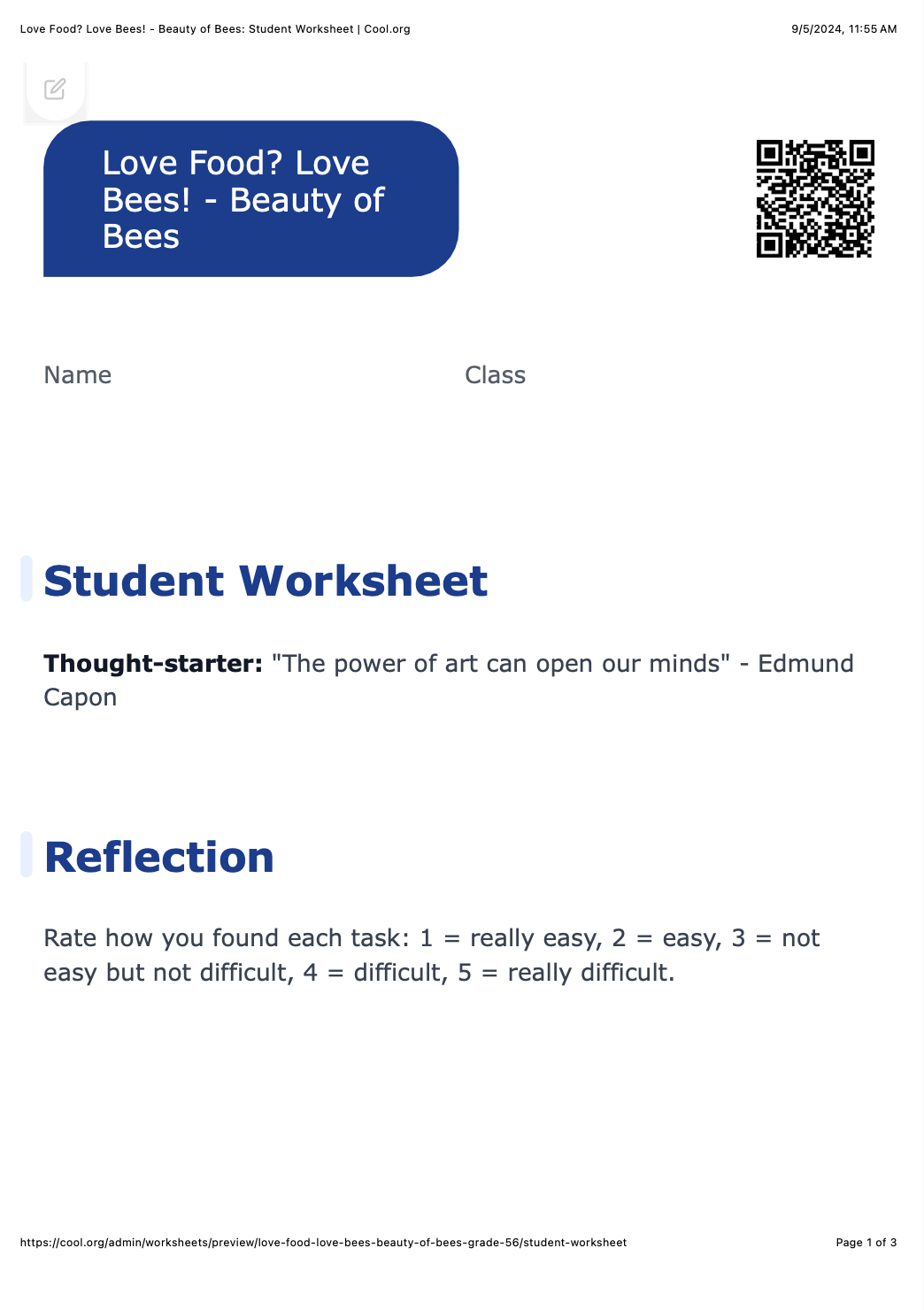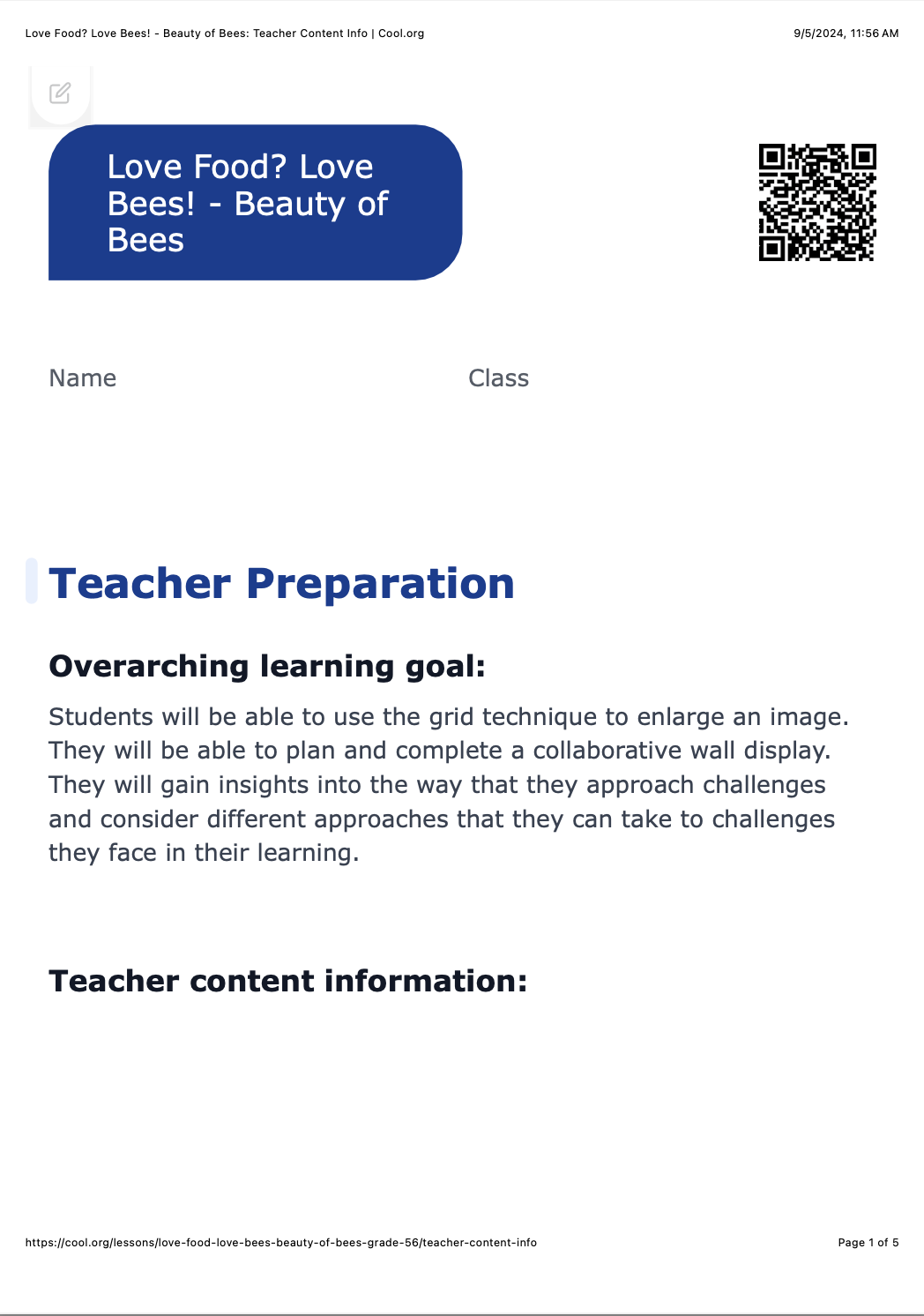Lesson summary
Bees pollinate at least a third of everything we eat and play a vital role in sustaining our ecosystems, therefore they need to be valued and protected. In this lesson, art and mathematics are combined to make a visual wall display using the grid enlargement method. The finished art work celebrates the beauty of bees while highlighting the symbiotic relationship they have with other living things. Students add more elements to the display to demonstrate the threats to the survival of bees, and some of the approaches we can take to support bees to continue their important work in our ecosystem.
Learning intentions
Students will...
- explore the beauty and importance of bees through art and mathematics.
- understand the threats to bees and ways to support their survival.
Success criteria
Students can..
- create a visual display using the grid enlargement method to celebrate the role of bees.
Lesson guides and printables
Curriculum links
Select your curriculum from the options below.
Lesson details
Skills
This lesson is designed to build students’ competencies in the following skills:
- critical thinking
- communication
- creativity
- collaboration
- social skills
Curriculum Mapping
Australian curriculum content descriptions:
Year 5 Visual Arts:
- Develop and apply techniques and processes when making their artworks (ACAVAM115)
Year 5 Mathematics:
- Apply the enlargement transformation to familiar two dimensional shapes and explore the properties of the resulting image compared with the original (ACMMG115)
Year 6 Visual Arts:
- Develop and apply techniques and processes when making their artworks (ACAVAM115)
Year 6 Mathematics:
- Investigate combinations of translations, reflections and rotations, with and without the use of digital technologies (ACMMG142)
General capabilities: Ethical Understanding, Personal and Social Capability, Literacy, Numeracy
Cross-curriculum priority: Sustainability OI.2, OI.3, OI.4, OI.5, OI.6, OI.7
Relevant parts of Year 5 Visual Arts achievement standards: Use visual conventions and visual arts practices to express a personal view in their artworks. They demonstrate different techniques and processes in planning and making artworks. They describe how the display of artworks enhances meaning for an audience.
Relevant parts of Year 5 Mathematics achievement standards: Students describe transformations of two-dimensional shapes.
Relevant parts of Year 6 Visual Arts achievement standards: They use visual conventions and visual arts practices to express a personal view in their artworks. They demonstrate different techniques and processes in planning and making artworks. They describe how the display of artworks enhances meaning for an audience.
Relevant parts of Year 6 Mathematics achievement standards: Students describe combinations of transformations.
Unit of work: Love Food? Love Bees!
Level of teacher scaffolding: High – arrange art resource/equipment. Add to wall display throughout the unit.
UN Sustainable Development Goals
- Target 15.5: Take urgent and significant action to reduce the degradation of natural habitats, halt the loss of biodiversity and, by 2020, protect and prevent the extinction of threatened species.
Resources Required
- Student Worksheet – one copy per student OR computers/tablets to access the online worksheet
- Bee Art images and projector
- Bee gridline maths activity print out and one piece of blank A4 paper for each student
- Rulers, grey lead pencils, art supplies (coloured pencils, textas, paints, etc), glue or thumbtacks
- Hive of Reflection print-out
- Grid Enlargement Practice activity.
Additional Info
This lesson has been created in partnership with ACT for Bees. ACT for Bees is a not-for-profit organisation taking action to preserve these essential pollinators, ensuring a food-secure future.
Related Professional Learning
How To Teach Sustainability With Hope
Quick summary: This course is for both primary and secondary teachers of all subjects, but especially for English, Science, Humanities and Geography teachers who are covering climate change and the cross-curriculum priority of sustainability.




Welcome back!
Don't have an account yet?
Log in with:
Create your free Cool.org account.
Many of our resources are free, with an option to upgrade to Cool+ for premium content.
Already have an account?
Sign up with:
By signing up you accept Cool.org's Terms and Conditions(Opens in new tab) and Privacy Policy(Opens in new tab).